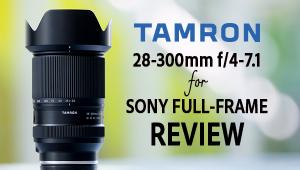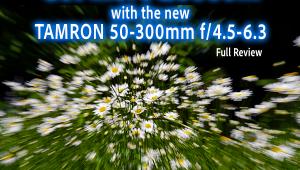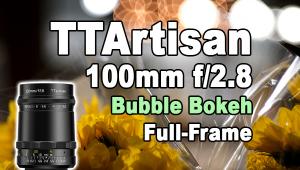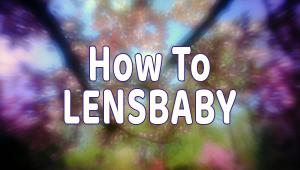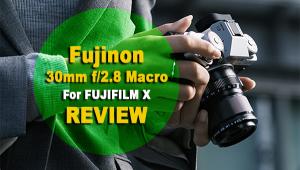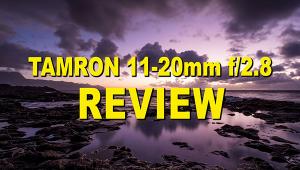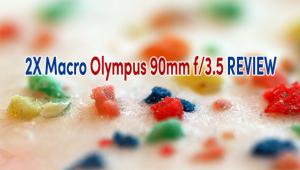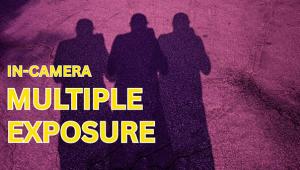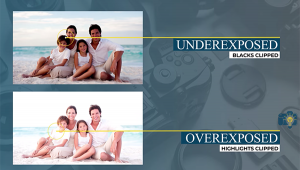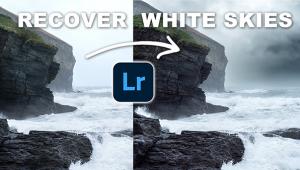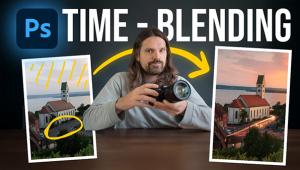Lensbaby 5.8mm f/3.5 Circular Fisheye Lens Review

The adage, “To get a fresh point of view in your photography, try a new lens,” was never truer than when applied to so-called fisheyes. I do not presume to know how a fish sees, but that’s irrelevant because lenses of this ilk get their moniker from the bulbous convexity of the front element, not from any inspection of the image going to the piscine brain.
I have shot with both circular and rectilinear fisheyes, the latter being a super-wide in the 8-14mm range that fills the rectangular frame with image, with concomitant distortions and frankly a whacked out point of view. I hadn’t worked with a circular manifestation for quite a while, mainly because I was never quite happy with the sharpness and overall image quality, although I had worked with a (quite a bit more expensive) Sigma that certainly made the grade. That changed, though, when Lensbaby, the originators of curious and clever optics, sent me their latest to test, a relatively affordable option at about $299.
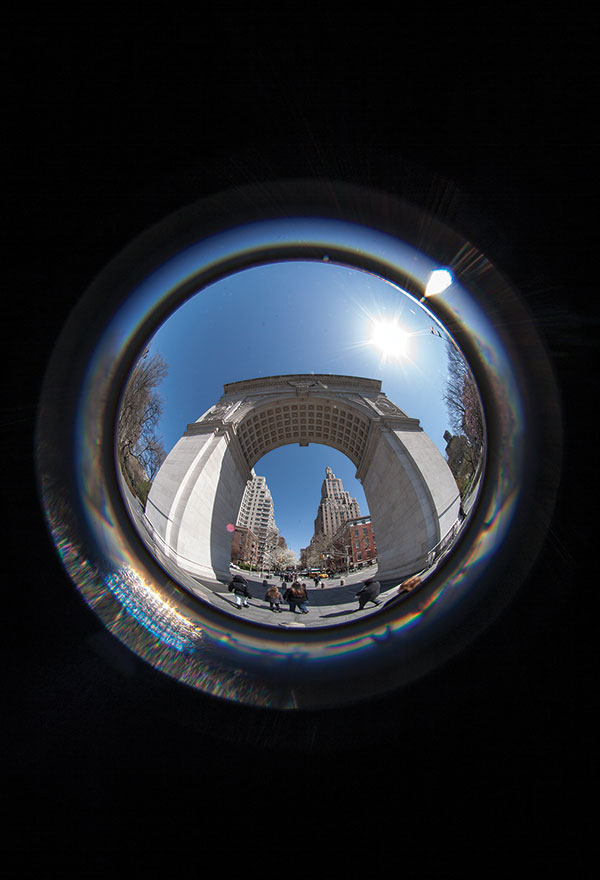
All Photos © George Schaub
In the past, the company first offered (and still offers) a fisheye for their Optic Swap System, but this new one mounts right onto Nikon F and Canon FE cameras. It offers “full-frame” shooters a 5.8mm focal length (8.7mm for APS-C sensors, for which it can also be used), albeit without AF or dedication that enables fully automatic exposure and focusing operations.
Depth Of Field & Close Focusing
Lensbaby is rarely restrained in their offerings, and this new one goes for broke. The focusing range is a startling 1/4 inch to infinity, and you can manually stop down all the way to f/22, which according to the supplied Depth Of Field (DOF) scale on the lens (although it doesn’t have an f/22 hash mark on the DOF scale) can give you DOF from about 3 inches to infinity(!). The aperture ring has what I would dub “soft” detents: you can set between the stops if need be, but there are no clicks for, say, half-stop settings.
And while you certainly can view the image on your Live View or through your eyepiece finder, I found it almost impossible to see deep focus when closed down anywhere past f/8, so I relied on the DOF scale instead for most of my work. Speaking of focusing, and of course it’s manual, I found that I had to check the setting each time I shot because the focusing collar is a bit loose and tended to move too easily as I carried my camera using a long Joby sling strap. A bit more drag on the focus collar would be good, although frankly I ended up using hyperfocal distance settings more than “eyeballing” focus for most of my shots.

Aberrations Included
The startling thing about this lens is that it follows what seems to be the Lensbaby team cheer: “If you’ve got an aberration, flaunt it!” To that end the makers have polished the internal lens barrel to kick off flare and halos, and the resultant view is like looking down a gun barrel that has been polished like a mirror. Adding to this is the 185-degree angle of view, which, if you never worked with a lens like this, can be oddly fascinating.
For example, try as I might I found it difficult to keep the sun out of the frame, especially when directly overhead. This of course adds to the flare effects, but had me trying to find a point of view that kept the shiny orb at least out of the direct angle of view. Another interesting effect of working with the hemispheric view is that it doesn’t matter if you shoot horizontally or vertically, so I chose horizontally (after I realized this) for a steadier handheld exposure. The only difference is that horizontal shots have more dark areas on the sides than the vertical ones, which show the dark top and bottom, but the image size and coverage is the same on both (see illustrations).
The lens is certainly lightweight, at 10.5 oz, and small (2.75x3 inches) when compared to dedicated (AE and AF) fisheyes and comes with a matching lens cap, yet no lens shade—but that would spoil the flaring fun. It’s manageable and requires no great learning curve in terms of making manual exposure and focusing decisions—which actually is quite an engaging way to work.
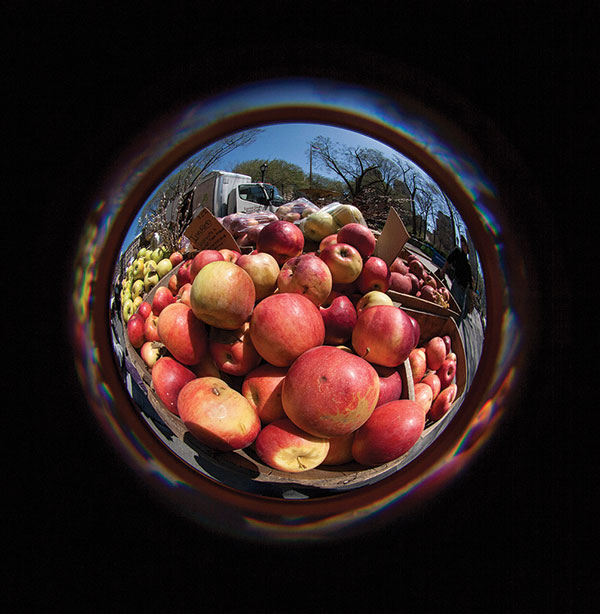
Hyperfocal Settings
The DOF scale is big, bold, and well marked, so setting hyperfocal distance (the closest focusing point with which infinity will also be in focus, according to the aperture setting) is easy. To set hyperfocal distance you move the set aperture hash mark on the right side to line up with the infinity mark on the scale, and then note the distance of the same aperture number on the left side of the lens. That’s the range within which you will have focus from close to far. As you’d see, and which should be apparent, the narrower the aperture the greater the potential range. My suggestion is that if you shoot a subject, say, 6 inches away, do not set the focusing distance on the lens at 6 inches. The better way is to use the DOF scale to include the 6 inches within a greater focusing range via the DOF scale and hyperfocal distance setup. You’re pretty much always going to have more within the frame than you bargained for, so why not expand the range of sharpness. (While some folks may try to squeeze max bokeh out of this lens, and it is possible, I think they’d be barking up the wrong focal length tree.)

Conclusions & Recommendations
One thing that struck me immediately upon inspection of the images on a big screen was the crisp imagery the lens produced. Having worked with fisheye supplementals (essentially screw-on front lens adapters) and bargain fisheyes, I was always interested in the effect but anything but thrilled about image quality—an amusing joke that faded in its humor upon retelling. That’s anything but the case here, where you get both the effect and the crisp image quality.
If you shoot nothing but fisheye and want full AE and AF control, then a dedicated fisheye lens is the way to go. But if you want to have the occasional fisheye fling this might be your cup of tea. Available right now for Canon EF and Nikon F mounts, the Lensbaby Circular Fisheye ushers you into a pretty amazing close-up and 185-degree view world. It encourages participation with its manual operation, and while you might have to do some testing to get a handle on exposure for different levels of light, especially if you’ve cut your photographic teeth on automatic exposure and focusing, the Lensbaby does force you to deal with some of the nitty-gritty of this craft. The payoff is that it does so in a relatively affordable way that makes the occasional foray into fisheye a fun trip indeed.
The Lensbaby Circular Fisheye has a list price of $299.95. For more information, contact Lensbaby at www.lensbaby.com.



